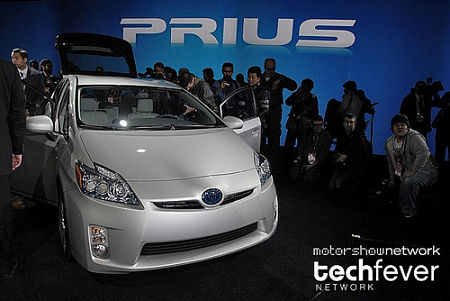Desconstructing Toyota's Tech Debacle

Toyota issued recalls in the last few months for several models including the 2010 Prius.
(Jochen Siegle/MotorShowNetwork)
Toyota Motor Corporation is on a proverbial roller coaster ride right now, one that started back in September of 2009 when it issued the first of three massive recalls. The world's second largest car manufacturer is addressing three problems it has found concerning the accelerator and braking mechanisms in several models worldwide.
The first recall was sent out in late September, 2009 to owners of over 4.9 million Toyota-branded cars and trucks. It is the largest recall enacted by the Toyota Motor Corporation and also included two Lexus models and the Pontiac Vibe, which shares mechanical underpinnings with the Toyota Matrix.
Owners began to report cases of unintended acceleration that caused several collisions and even four deaths. Toyota found the problem to be with its all-season floor mats, whose front edge could hold the accelerator pedal in an open position.
The corporation is providing a short term solution for recalled vehicles, which will prevent gas pedals from sticking until they are altogether replaced. This solution calls for dealerships to shave off the bottom edge of the accelerator pedal and sand it to a smooth finish so that it is not obstructed by the floor mat.
At the same time, foam supports under the vehicle carpeting will be replaced with smaller pieces to lower the height of floor mats.
Toyota will then replace the accelerator pedals when a new design is engineered and made available to the dealer network.
Less than a month into 2010, Toyota initiated its second recall after further complaints from customers about unintended acceleration. The problem was deemed unrelated to issues with the floor mats and involved over 2.3 million Toyotas and Pontiac Vibes.
In late January, the automaker announced that a mechanism inside the accelerator pedal assembly was subject to malfunction.
Toyota engineers found that the contact point between the pedal assemblage and housing was becoming worn down in certain cases, leading to the malfunction. This contact point uses friction to improve feedback between the pedal and the driver's foot, giving the pedal a more natural and progressive action.
The metal teeth used at the contact point were found to wear down easily. When exposed to heat and moisture, friction between the teeth and the housing can cause the pedal to slow down in returning to its original position. In certain cases, the pedals became stuck open.
Toyota repaired the recalled models by installing a "precision cut" steel plate into the assembly beneath the contact point. The plate is designed to relieve pressure off the mechanical teeth and decrease the friction.
The automaker claims the piece has been rigorously tested to make sure it functions properly. It only requires 30 minutes for installation.
By early February, Toyota Motor Corporation discovered yet another problem with two of its models. This time, the braking system was found to malfunction in the 2010 Toyota Prius and Lexus HS 250h hybrids and 400,000 cars were recalled worldwide.
These gasoline-electric hybrids utilize a regenerative braking system that is designed to recover lost energy while the brakes are applied and convert it into electricity.
It is controlled by manufacturer-calibrated software that dictates how the electronic brakes should work. Some drivers with these systems reported an inconsistent feel and a loss in braking ability when the anti-lock brakes were engaged.
Toyota's solution to the problem was to simply update the software controlling the entire braking system. Dealers were distributed the new software which can be programmed into recalled vehicles.
After several months and millions recalled cars, Toyota survived three massive problems associated with some of its most popular models. However, the financial effect on the corporation has been minimal due to a $5.6 billion dollar reserve designated solely for recalls.
The up and down ride Toyota has been on brought into question the automaker's storied reliability. However, the corporation is issuing ongoing apologies in the hopes of restoring the faith of its customers.



